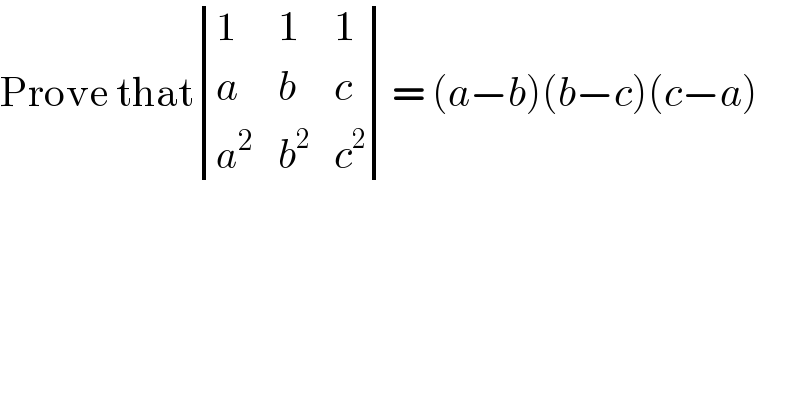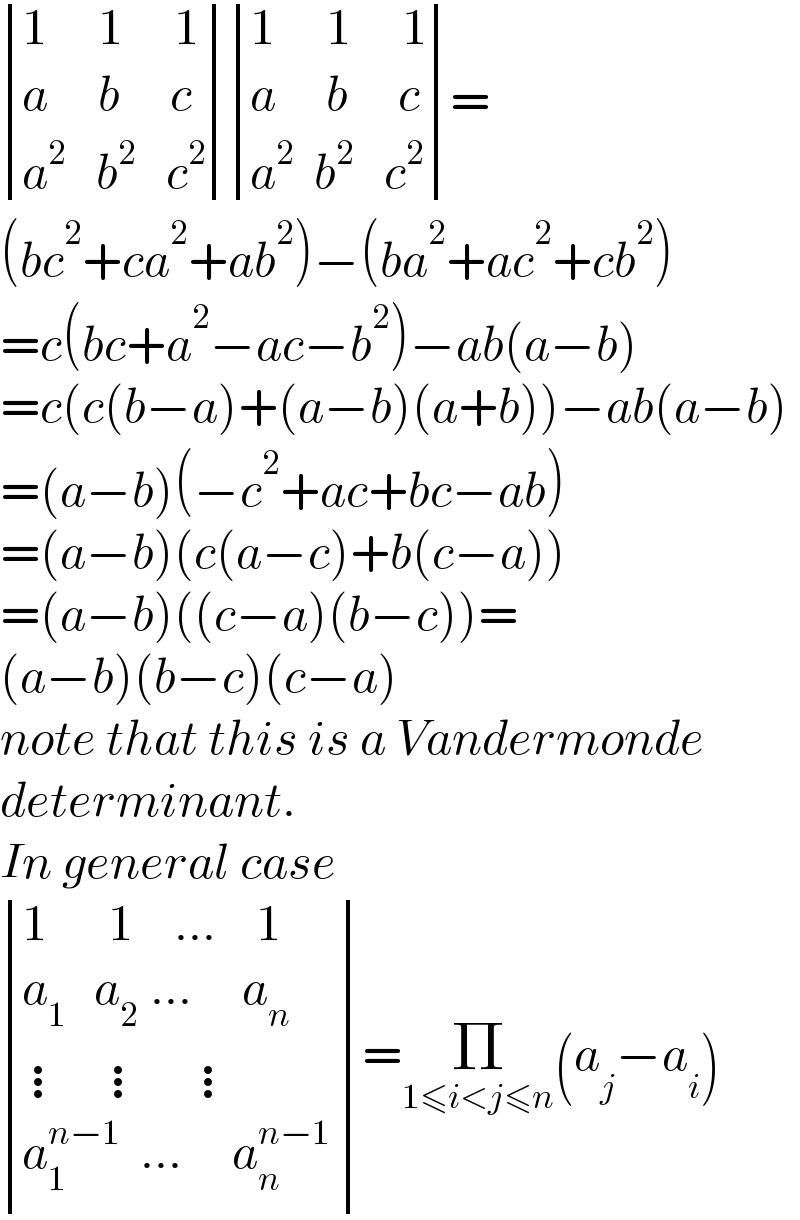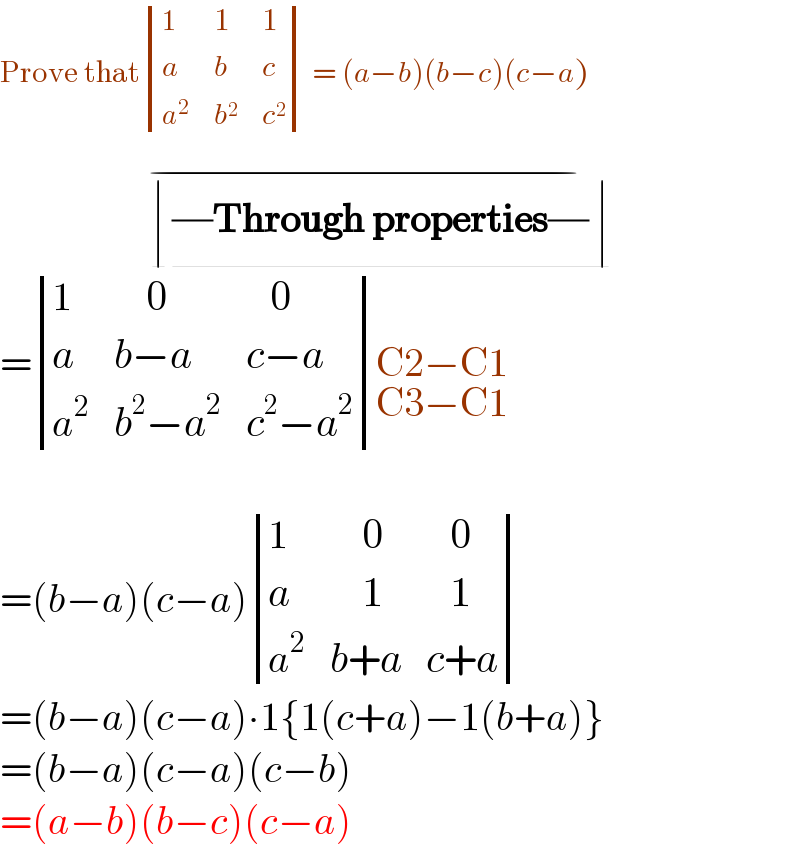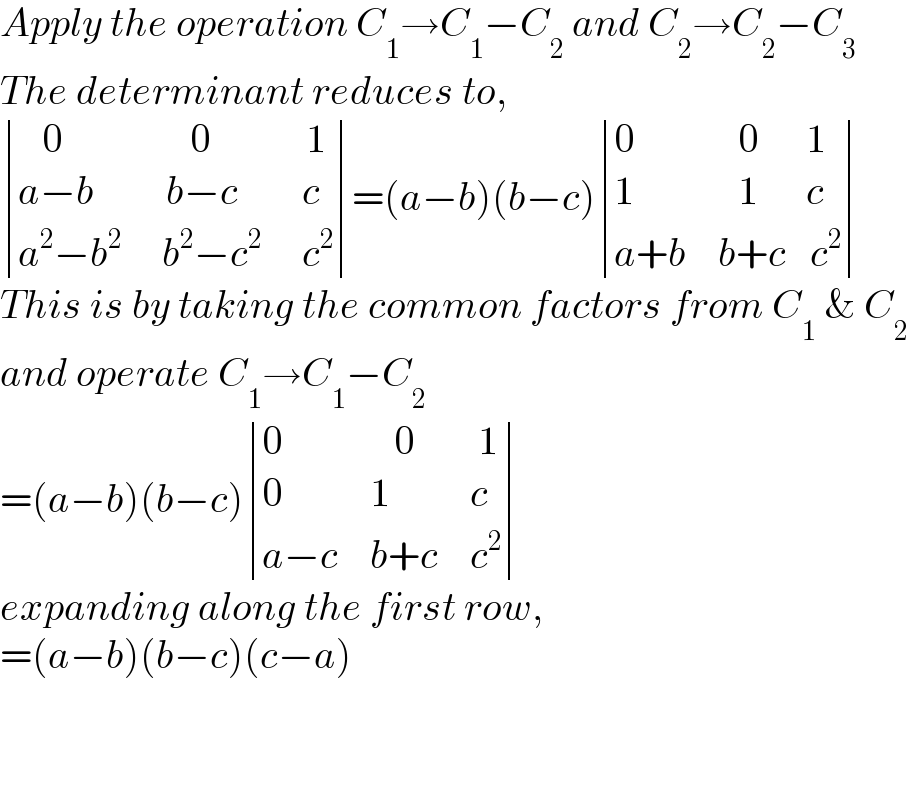
Question and Answers Forum
Previous in Matrices and Determinants Next in Matrices and Determinants
Question Number 175110 by nadovic last updated on 19/Aug/22

Commented by kaivan.ahmadi last updated on 19/Aug/22

Commented by Tawa11 last updated on 19/Aug/22

Commented by puissant last updated on 21/Aug/22

Answered by Rasheed.Sindhi last updated on 19/Aug/22

Commented by puissant last updated on 21/Aug/22

Commented by Rasheed.Sindhi last updated on 21/Aug/22

Answered by Rajpurohith last updated on 10/Jun/23

